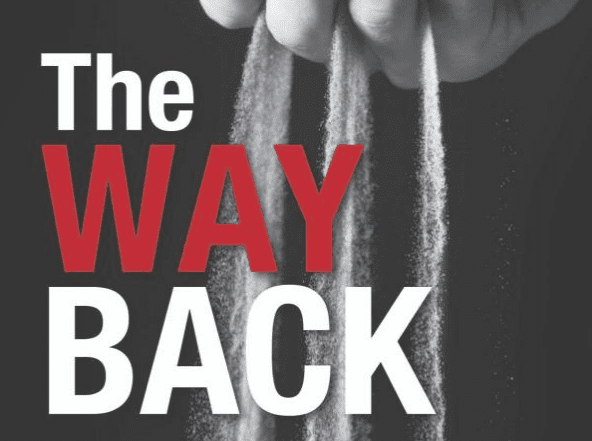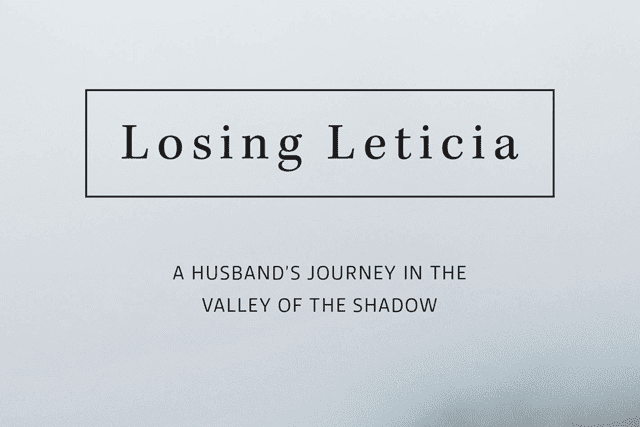Listen to this article
Listen to this article
Loading
Play
Pause
Options
0:00
-:--
1x
Playback Speed- 0.5
- 0.6
- 0.7
- 0.8
- 0.9
- 1
- 1.1
- 1.2
- 1.3
- 1.5
- 2
Audio Language
- English
- French
- German
- Italian
- Spanish
Open text
‘the way back: how christians blew their credibility and how we get it back’. by christopher doughty –. “the way back” is a collaboration between christian media and marketing professionals phil cooke, phd and jonathan bock. mixing humor and censure, ancient and modern, doctrine and action, the book’s core question is this: “how can we change the perception of today’s culture toward christians and christianity?”. as marketing experts, the authors initially interpret the public’s negative perception of christianity as a marketing problem—something to be corrected with the right messaging. soon, however, the rhetoric shifts from a problem of perception to one of demonstration. continuing with their marketing analogy, the authors argue that the source of christianity’s image problem isn’t in its presentation or its audience, but rather, its sales force. christians, the salespeople for christianity, fail to sell society on the product of the gospel because we don’t understand it, we don’t have confidence in it, and we don’t use it ourselves. in other words, most professing christians in the u.s. today have a shallow understanding of the bible, a marginal relationship with god and the church, and little implementation of biblical precepts, especially in the areas of service and personal holiness. no amount of marketing will improve the cultural standing of christianity in america because the public’s criticisms are valid—they are perceiving the real hypocrisy that exists between our message and our example. the core message of the book is that example speaks louder than any other form of influence, and that if christians want to see social change, they must be the change they want to see in society, instead of complaining about society. next, the book considers the early church and how its radical displays of love shocked, threatened and eventually charmed roman society. faced with horrific persecution, the early christians’ feats of defiant love were only possible through an intense devotion to what the authors call the “s7 mysteries”—seven aspects of christian living that include surrender, scripture, submission, service, sacrifice, simplicity and suffering. after describing the behaviors of the early church that we should emulate, the book segues into a discussion of the qualities that contemporary christians should relinquish, including complacency, pride and defensiveness. here, the book almost back-pedals into a marketing focus, emphasizing the harmony needed between the message and the messenger: “if the message of the gospel drives people away, so be it. but if our attitude, behavior or approach drives them away, then it’s simply wrong.”. the remainder of the book explores potential areas of practical service that could communicate christian love in a socially impactful way. this section bears a striking resemblance to william booth’s “schemes” and “crusades” in “in darkest england,” and like “in darkest england,” a far greater portion of “the way back” is dedicated to brainstorming solutions than pontificating on the problems. also like “in darkest england,” however, some of the proposed solutions seem more realistic than others. for example, with the “craigslist christmas” concept, in which individuals would meet up with needy parents they met online, the safety risk just doesn’t seem worth it when you could volunteer with an organization like the salvation army to assist low-income families with their christmas shopping, especially now that many of our distribution sites have a shopping-style model. the notion of making the public foster care system obsolete through church adoptions also seemed a little naïve to me. sure, the public foster care system’s numbers aren’t great, but it seems like quite a stretch to assume that the church’s performance would be any better, considering the church has also had to grapple with issues of abuse within its own ranks (hence the salvation army’s rigorous child safety training requirements). on balance, however, even though specific ideas may be flawed, this section is effective at reorienting the christian audience to a mindset of service, as well as generating ideas about how we can serve. each service concept includes an existing example of the idea being proposed, which provides encouragement and makes the ideas seem more tangible and practicable. while “the way back” addresses a number of serious topics, it often adds a dash of irreverent—and enjoyable—humor. when discussing the mismatch between our message and our example, for instance, the authors describe christians as “the fat guy at the gym who’s lecturing everyone else about health,” going on to say that, “working out is hard, but wearing yoga pants is easy.” another pleasing aspect of the book is the authors’ extensive incorporation of insights from prominent christian thinkers across time, from tatian and dionysius to c.s. lewis and tim keller. although this book has four parts, none of them are very long, and at 18 chapters, it would probably fit well within the structure of a short-term weekly bible study. the reading level is moderate, so this book should be accessible to people in their teens and upwards. readers hoping to improve the cultural perception of christianity will finish this book looking for ways to deepen their relationship with god and make a positive impact in their communities.
Open context player
Close context player
Plays:-Audio plays count
‘the way back: how christians blew their credibility and how we get it back’. by christopher doughty –. “the way back” is a collaboration between christian media and marketing professionals phil cooke, phd and jonathan bock. mixing humor and censure, ancient and modern, doctrine and action, the book’s core question is this: “how can we change the perception of today’s culture toward christians and christianity?”. as marketing experts, the authors initially interpret the public’s negative perception of christianity as a marketing problem—something to be corrected with the right messaging. soon, however, the rhetoric shifts from a problem of perception to one of demonstration. continuing with their marketing analogy, the authors argue that the source of christianity’s image problem isn’t in its presentation or its audience, but rather, its sales force. christians, the salespeople for christianity, fail to sell society on the product of the gospel because we don’t understand it, we don’t have confidence in it, and we don’t use it ourselves. in other words, most professing christians in the u.s. today have a shallow understanding of the bible, a marginal relationship with god and the church, and little implementation of biblical precepts, especially in the areas of service and personal holiness. no amount of marketing will improve the cultural standing of christianity in america because the public’s criticisms are valid—they are perceiving the real hypocrisy that exists between our message and our example. the core message of the book is that example speaks louder than any other form of influence, and that if christians want to see social change, they must be the change they want to see in society, instead of complaining about society. next, the book considers the early church and how its radical displays of love shocked, threatened and eventually charmed roman society. faced with horrific persecution, the early christians’ feats of defiant love were only possible through an intense devotion to what the authors call the “s7 mysteries”—seven aspects of christian living that include surrender, scripture, submission, service, sacrifice, simplicity and suffering. after describing the behaviors of the early church that we should emulate, the book segues into a discussion of the qualities that contemporary christians should relinquish, including complacency, pride and defensiveness. here, the book almost back-pedals into a marketing focus, emphasizing the harmony needed between the message and the messenger: “if the message of the gospel drives people away, so be it. but if our attitude, behavior or approach drives them away, then it’s simply wrong.”. the remainder of the book explores potential areas of practical service that could communicate christian love in a socially impactful way. this section bears a striking resemblance to william booth’s “schemes” and “crusades” in “in darkest england,” and like “in darkest england,” a far greater portion of “the way back” is dedicated to brainstorming solutions than pontificating on the problems. also like “in darkest england,” however, some of the proposed solutions seem more realistic than others. for example, with the “craigslist christmas” concept, in which individuals would meet up with needy parents they met online, the safety risk just doesn’t seem worth it when you could volunteer with an organization like the salvation army to assist low-income families with their christmas shopping, especially now that many of our distribution sites have a shopping-style model. the notion of making the public foster care system obsolete through church adoptions also seemed a little naïve to me. sure, the public foster care system’s numbers aren’t great, but it seems like quite a stretch to assume that the church’s performance would be any better, considering the church has also had to grapple with issues of abuse within its own ranks (hence the salvation army’s rigorous child safety training requirements). on balance, however, even though specific ideas may be flawed, this section is effective at reorienting the christian audience to a mindset of service, as well as generating ideas about how we can serve. each service concept includes an existing example of the idea being proposed, which provides encouragement and makes the ideas seem more tangible and practicable. while “the way back” addresses a number of serious topics, it often adds a dash of irreverent—and enjoyable—humor. when discussing the mismatch between our message and our example, for instance, the authors describe christians as “the fat guy at the gym who’s lecturing everyone else about health,” going on to say that, “working out is hard, but wearing yoga pants is easy.” another pleasing aspect of the book is the authors’ extensive incorporation of insights from prominent christian thinkers across time, from tatian and dionysius to c.s. lewis and tim keller. although this book has four parts, none of them are very long, and at 18 chapters, it would probably fit well within the structure of a short-term weekly bible study. the reading level is moderate, so this book should be accessible to people in their teens and upwards. readers hoping to improve the cultural perception of christianity will finish this book looking for ways to deepen their relationship with god and make a positive impact in their communities.
Listen to this article















